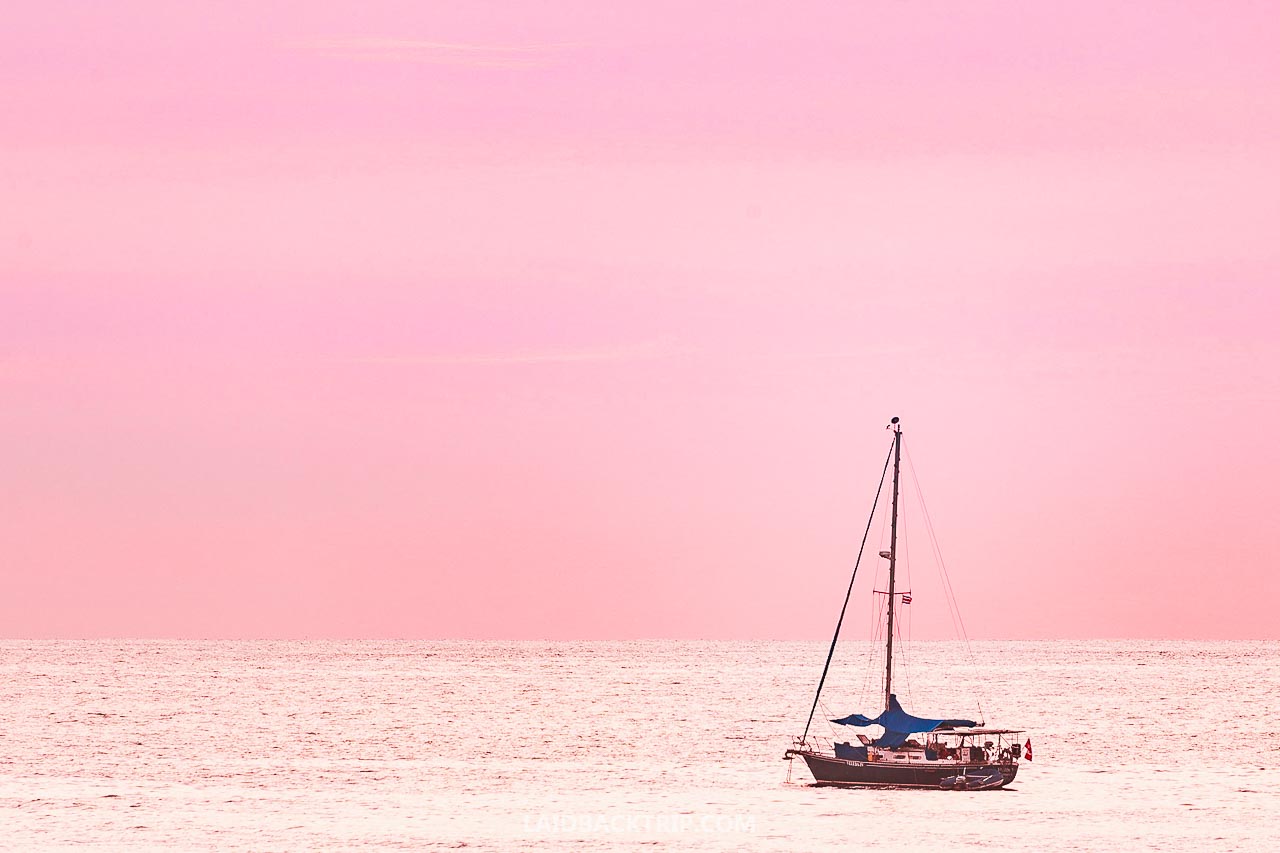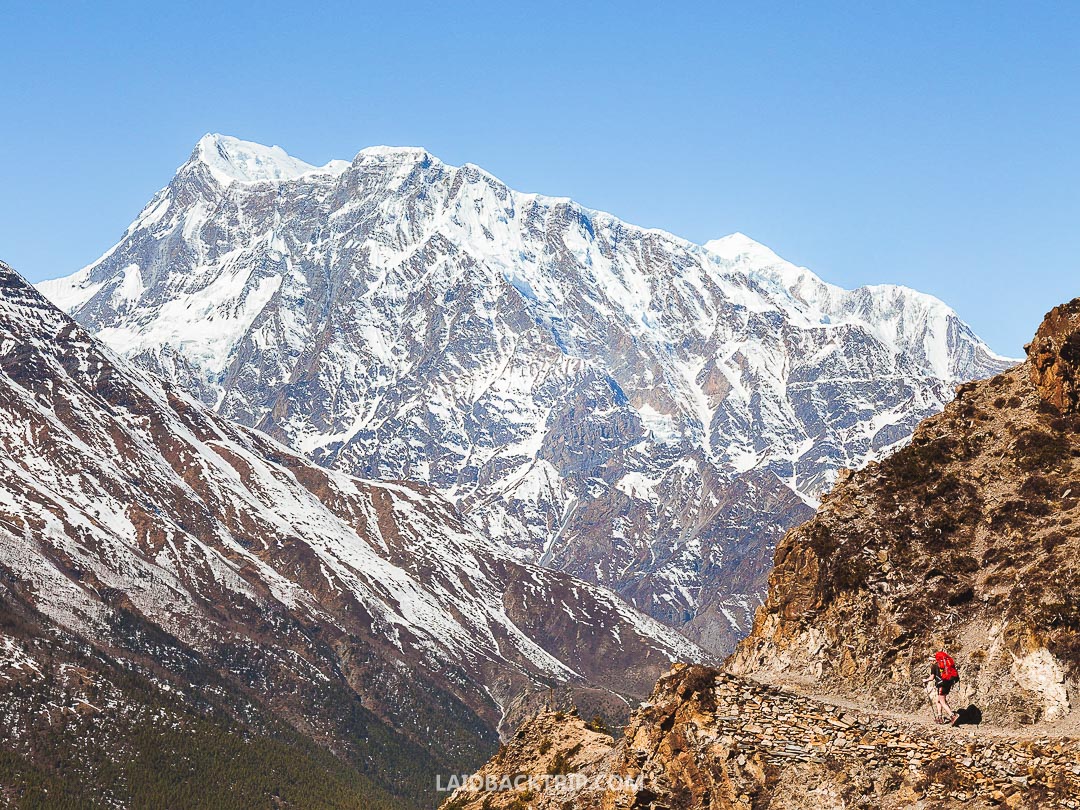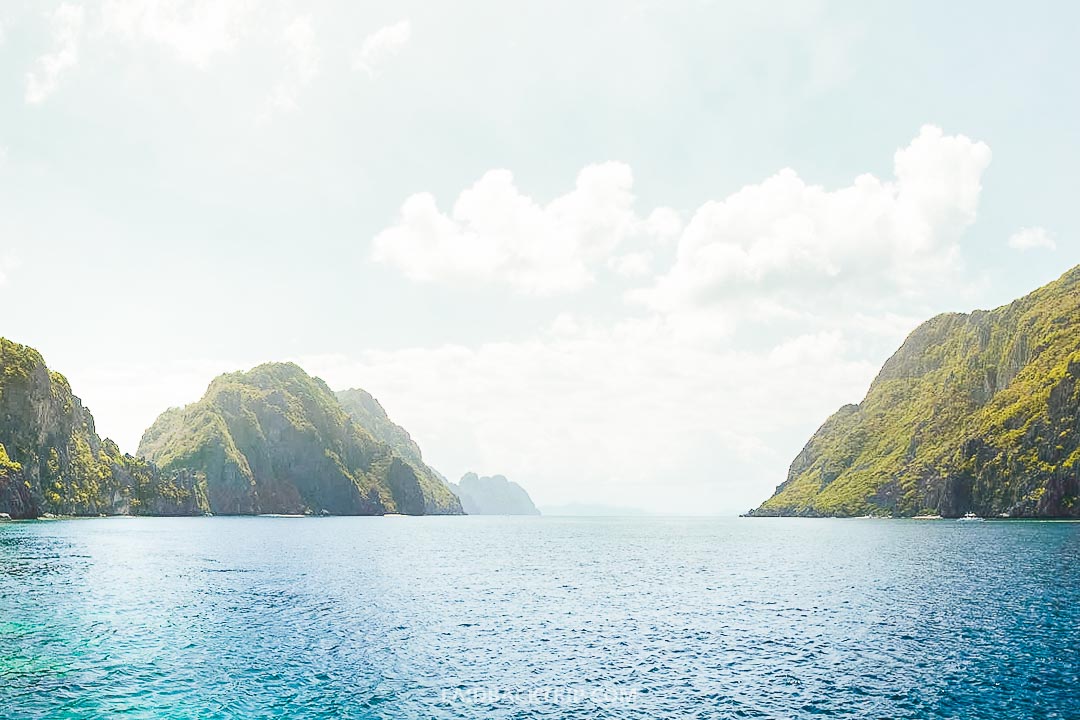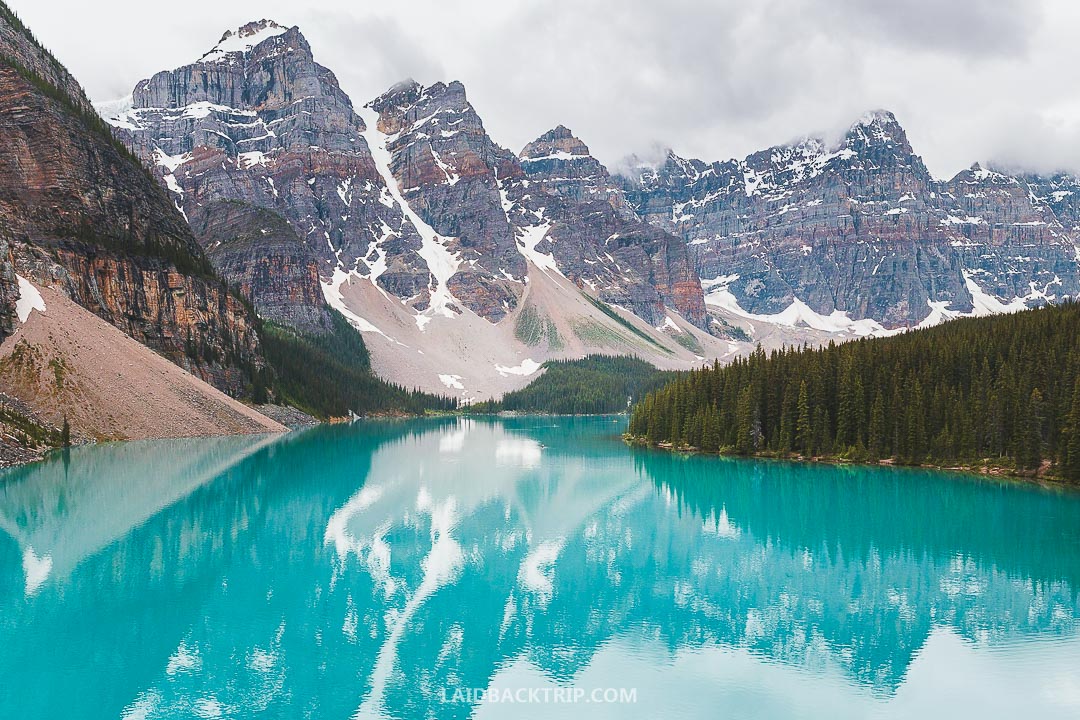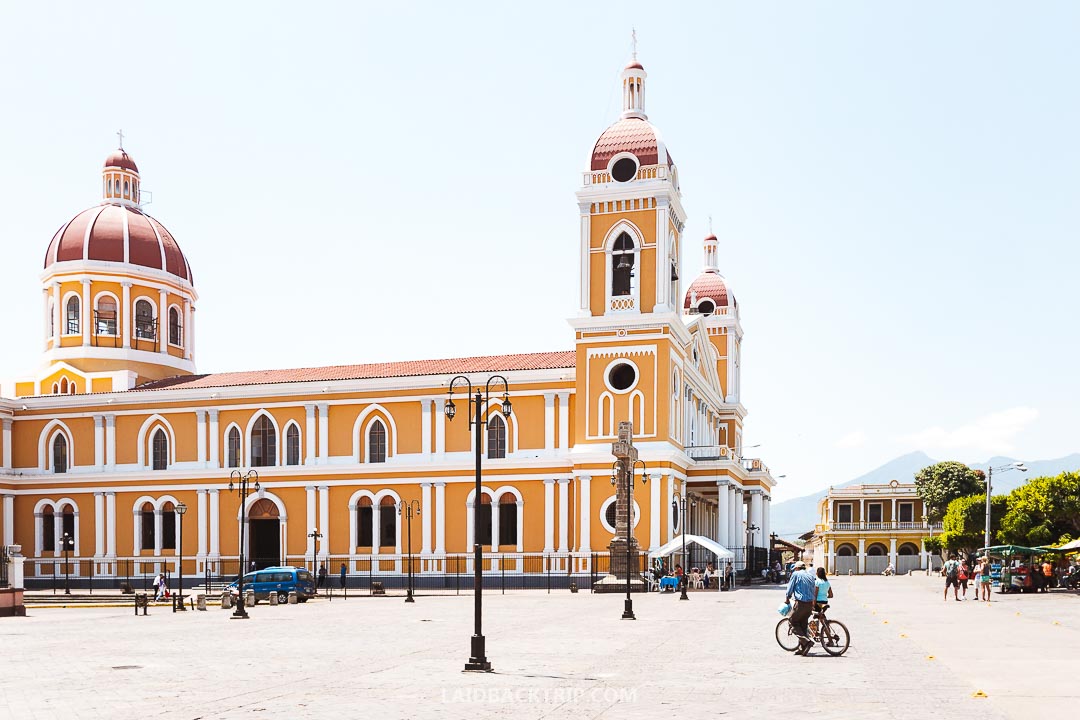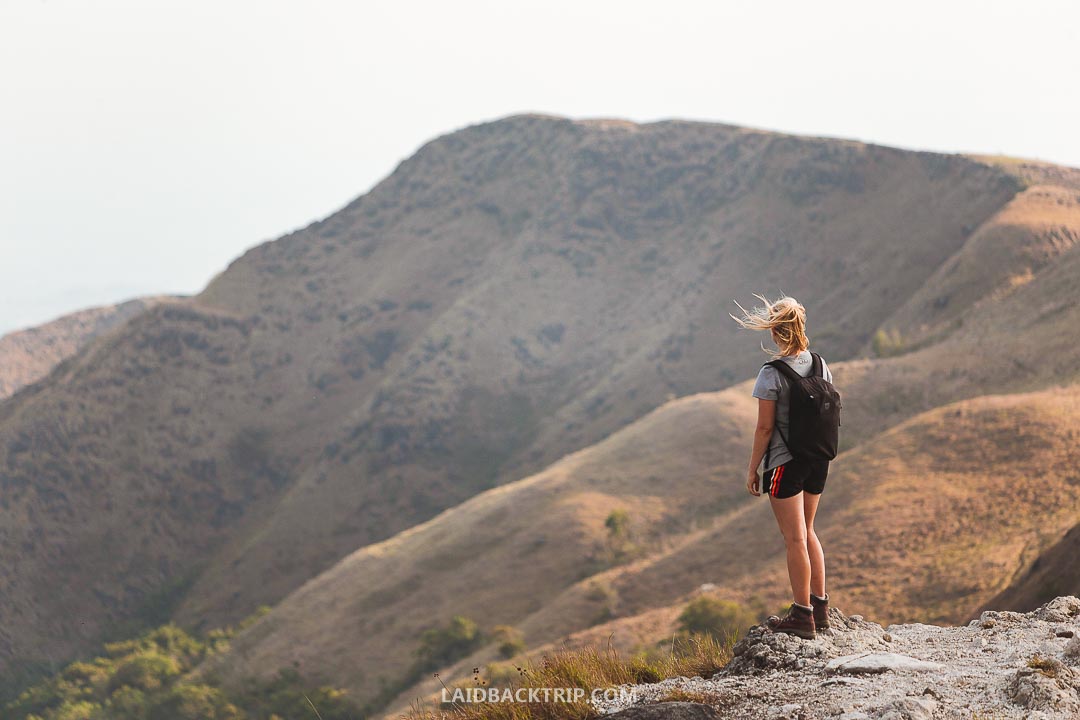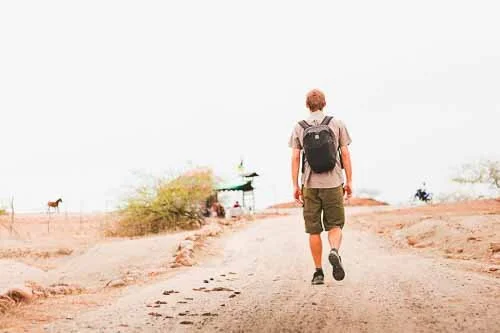How to Plan Perfect Travel Itinerary: Easy 10 Step Guide
Are you planning your short holiday or a year-long trip? Everything starts with a travel itinerary as perfect or terrible itinerary can either make or break your adventure. These following ten easy steps will teach you how to create a travel itinerary and how to avoid the most common mistakes.
Creating the perfect travel itinerary is an art in a way. As in every industry, there are a few people among us who can create the best itinerary without any hitches in a short time.
The rest, on the other hand, have to put a lot of time and effort into making an itinerary which makes sense, and is worth to follow.
When creating a travel itinerary, there are so many things to plan, consider and organize that you might start to feel overwhelmed at first, but with our step by step planning guide, planning a travel itinerary will become extremely easy.
We've compiled an essential guide on how to make the perfect travel itinerary.
Follow the list which is stacked with useful tips and tricks on how to make your trip awesome.
Although making the itinerary can be sometimes tiring and time-consuming, when you do it right, when finally on the road, you'll be rewarded instantly.
As from the very beginning to the end of your journey you won't have to take care of anything else but enjoying your time and soaking up the world's beauty around you.
Do You Need Travel Itinerary?
Do you mind staying overnight at the train station sleeping on a bench because there was only one train departing today and you've missed it? Having a travel itinerary will help you to minimize the struggles and allow you to have control over your trip.
And no matter what you think about plans or itineraries, the itinerary gives your holiday a structure, it helps you to save money, maximize the traveling time and you won't miss anything on your bucket list.
First, we must outline there are three types of travelers.
Those who need to plan their day step by step and who stick to their itinerary no matter what, those who only buy a one-way ticket and then go with the flow, and the last group of travelers are those who create an itinerary, but later are able to customize it or adjust it according to the current situation.
Because you've landed on this article, we believe you belong in the group number one or number three.
We've been traveling the world for the past ten years, and we tried many tricks, tips and travel approaches when it comes to planning an itinerary.
From not having one to following the strict itinerary for example when hiking the Annapurna Circuit.
If we can compare those two situations, we for sure prefer to have a travel itinerary, or at least to know how to create one, so we can quickly and efficiently organize our time.
#1 Make a Wish List
Creating a list of all the places you want to visit and activities that you would love to do in the destination is a great way how to start planning your dream vacation.
Write down everything you know about the place you are going to visit in your travel notebook, things you want to do, the activities you want to try and places you want to see.
This list does not need to include only well-accessible places or highlights every traveler visit in the country.
Write down anything you think is interesting for you. Later will come the stage when you need to figure out if your list of must-visit places is doable and how.
Also, creating an inspiration board, which can be anything from an online notes app to old school pen and paper board, with photos and articles is a great idea if you are looking for more information or don't know anything about the place.
If you have a specific activity in your mind that you want to do, or there's an event you would like to visit, plan your trip around it.
Do you want to go hiking in Patagonia, whale watching in Iceland, or would you like to go shopping in New York?
This will have the highest priority on your itinerary, think of an imaginary anchor, make it a centerpiece of your plans and adjust the rest of the trip according to the date of the event.
#2 Create Budget
Every holiday planning starts with creating a travel budget.
It doesn't matter if you will stay in Cartagena in shabby dormitories or 5-star all-inclusive hotels, hitchhike or fly with a first class in Patagonia, cook at the hostel kitchen or eat out in fancy restaurants in Sydney, deciding on a how much money you want or can spend will help you to stay in control of your budget.
Thinking about the budget will also help you to select places you can afford to visit or the way of transport how you can reach them.
Most importantly, make your budget realistic. Some destinations are more expensive than others, and you will avoid some unpleasant surprises. Iceland is way more expensive than Ecuador.
It is always better to budget a bit more as unforeseen situations might happen.
By having a solid plan you can avoid arguing with your partner about overspending when both of you know the budget limit, or if you travel in a group of friends, you can agree on the certain amount of money you are willing to spend for activities, accommodation or food.
This doesn't mean that you can't spontaneously decide to spend extra and do some crazy activity such as volcano boarding in Nicaragua you've always wanted to try or treat yourself with an fancy dinner in Paraty.
But it's useful to keep your day to day expenses in the bay to prevent inevitable stress and arguing with your travel companions.
#3 Decide on Season
Most of the travel destinations around the world have a high season which is more comfortable for traveling for many reasons but is also more crowded, and a low season when you can expect a more relaxed atmosphere, but also a bit more unstable weather conditions.
Arriving in the Amazon jungle in rainy season will be a completely different experience from traveling during the dry season as almost 80% of the area will be flooded - this is for sure something you cannot overlook and must take into account.
Also, the length of daylight varies during the year. Let's say you would love to visit Prague in the Czech Republic.
The days in winter are much shorter than in the summer, which may temper with your outdoor activities.
From mid-October it's going to be dark from 4 PM, in July there's going to be daylight almost till 10 PM. As you can see, that's a huge time difference, and you need to take it into consideration when creating the travel itinerary.
Despite all this, Prague in Winter is still beautiful, and arriving during this time of the year here is one of the best ways to avoid the crowds.
And then there is the weather. Although the weather can be unpredictable, you roughly know what you can expect in Europe in December or in July.
Always create an alternative plan in case you get stuck with bad weather conditions for several days.
#4 Do Your Homework
There's never been an easier way how to gather all the information about your dream destination than today as you can do almost everything from the comfort of your home.
The internet is your best friend here, and with small help of traditional paper travel guides, you can make wonders.
Doing research about the new destination can be daunting as there's so much information you need to sort out and process, but all the hard work will pay off once you land.
When creating the itinerary, use maps. Trust us. This approach will help you to have a better vacation.
One of the biggest travel mistakes almost every traveler is guilty of is that they overly trust and rely on their geography knowledge, which is most of the time pretty rusty and far away from reality. Some places can be a bit further away than you would have expected.
Starting to collect information after you have checked-in in your hotel will be probably quite stressful experience not to mention that you lose your precious time.
Also, check for national holidays, which may affect opening hours and transportation schedules.
#5 Plan Your Trip Together
If you're going to spend your trip with your partner, family, or friends, get them involved. Share your ideas and dreams with others and let everyone do the same.
If you try to plan it all just by yourself, you will probably include mostly the things you're interested in, and when you arrive at the destination, you might find out, that your companions don't share the same ideas about things to do.
Not everyone wants to spend a week just lazing on a beach somewhere in Bocas del Toro, and not everyone wants to see all ruins in Mexico.
Working on a project in a team is the fastest, most efficient way to get the job done, no one will feel like they were left out, and there is a smaller chance that you overlook or forget something important.
#6 Be Flexible
We didn't want to discourage you from the very beginning, but there's no such thing as a perfect itinerary.
Your flight can be delayed, a rental car breaks down, or the best restaurant in the city will be closed due to technical maintenance. In Westfjords, we got a flat tire, which took some time to change. The next day, we had to visit the car shop to get it fixed. It wasn't the end of the world, but it was definitely a delay.
When planning your next trip, make sure that you have a couple of extra days left to help you with adjusting your plans in case something you cannot expect goes wrong.
You might need to add an extra day or cut activity, or in the worst case scenario to change your plans entirely.
When we visited Jasper National Park in the Canadian Rockies, the weather was relentless, and we had heavy rain for two days and even snow, which ruined all our hiking plans.
We changed the plans, went to hot springs (pretty cool experience in the snow storm) and enjoyed the day anyway.
#7 Schedule Free Day
If we go for a shorter trip, for example a one week in Jordan or two weeks in Costa Rica, we usually plan a free day for the last day of our stay.
It allows us to arrive at the place which has an airport a day early and have a completely stress free day while exploring the city. If you plan to stay longer though don't hesitate to add more free days in your itinerary.
You will see how much more relaxed you'll feel.
At times, traveling can be quite challenging, and the first thing people usually do is that they cut the sleep, which is a mistake and will catch up with them in few days and they will have to take a couple days off anyway.
#8 Balance the Itinerary
Do you have more places on your wish list than days? Select what you can't miss and what you think won't be that spectacular. Consider distances between destinations, and make sure everything makes sense.
Prioritize the order of the places you want to visit, find the best way to visit them and keep your itinerary realistic
Even though you could easily spend weeks in Banff National Park or Torres Del Paine, you won't have time for every single hike in these destinations.
The main point is that you can't see everything, even though you desperately want to. People often tend to over plan their itinerary as they think more is better, but later they actually don't have enough time to see it all.
Holidays should be fun, not a sightseeing race who is going to see more.
#9 Travel Times
Every time you will move from one place to another, you remove the time from your sightseeing and holiday.
Is it worth to travel 22 hours by overnight bus, to see the Atacama Desert?
Is it a sleeping bus where you can get a good sleep or is it an uncomfortable old bus, without reclining seats and you won't have any energy left for exploration once you arrive there?
Wouldn't be a better idea to take a flight instead? How far is the airport from the city center and how much time does it take to get there?
When planning an itinerary, travel times between places are one of the things that people underestimate the most. There can be a difference in what you plan and expect, and reality.
To maximize the time of your travels, the starting point of the trip doesn't have to be the same as the ending point. Find the most convenient place to fly into and out of and start planning from there.
For example, we started our 4-week Australia road trip in Sydney and ended in Darwin.
Also factor in the jet lag, which affects everyone differently, some might feel it a few hours, some several days. Long-haul flights can negatively affect your first couple of days, so don't underestimate it.
#10 Collect All the Information for Your Trip
Your hotel bookings, flight tickets, restaurant reservations, car rentals information, travel insurance details. Make a hard copy of all your documents, and keep them safe in a passport wallet.
A great idea is also to book things in advance. You can save some money, and ease your mind as you will have everything reserved once in the destination.
When we are looking for accommodation, we always use the combination of Booking.com and Hostelworld.
When traveling by rental car, you can make your reservation here Rentalcars.com.
For tours, we use GetYourGuide or Viator.
Extra Tip: Include the contact information for the nearest embassy or consulate in case of emergency. You never know when all this information comes handy.
Remember, travel itinerary is not a binding contract, it only helps your travel to go smoothly, and the best itinerary is often the most flexible one.
Give yourself room and time for exploration, enjoy your trip, and most importantly, have fun!
Travel Insurance
We never leave home without travel insurance that was designed to cover our expenses if something goes wrong during the trip.
Travel insurance protects against theft, flight delays, injury, illness, cancellations, and much more.
World Nomads provides travel insurance for travelers to cover their trip essentials, including sports and adventure activities.
SafetyWing is affordable travel insurance for backpackers, long-term travelers, and digital nomads.
Travel smarter and safer!
Travel Resources
Here you can find links to all the travel resources we use and which you might find helpful when planning your next holiday.
Accommodation: When looking for accommodation, we usually search hotels via Booking.com or Hostelworld.
Tours: Although we love to travel independently, some places are better to visit with a guided tour.
We prefer GetYourGuide for its easy-to-use interface and solid reputation. Another great alternative is Viator.
Rental Cars: When going on a road trip, we always use Rentalcars.com, a reliable site for booking a rental car in advance.
Flight Tickets: When looking for flight tickets, you can search Skyscanner to find the best price.
Travel Insurance: World Nomads and SafetyWing cover against risks of travel.
